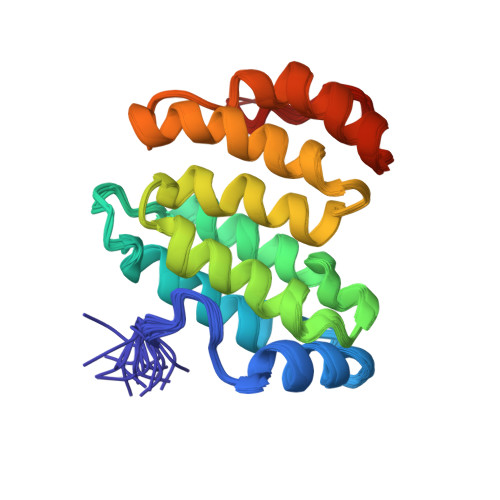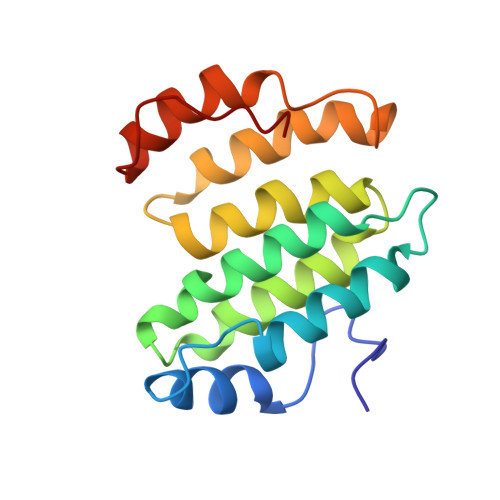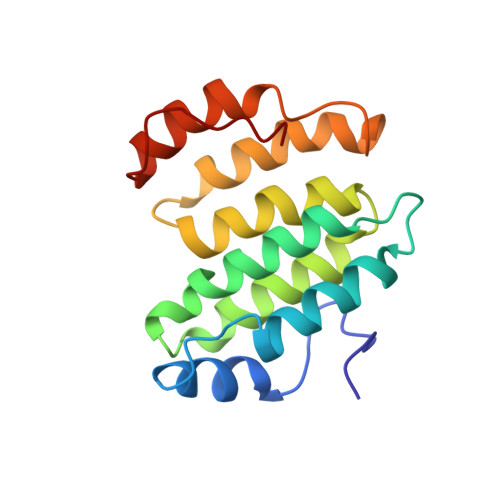NMR solution structure of KP-TerB, a tellurite-resistance protein from Klebsiella pneumoniae
Chiang, S.-K., Lou, Y.-C., Chen, C.(2008) Protein Sci 17: 785-789
- PubMed: 18305192
- DOI: https://doi.org/10.1110/ps.073389408
- Primary Citation of Related Structures:
2JXU - PubMed Abstract:
Klebsiella pneumoniae (KP), a Gram-negative bacterium, is a common cause of hospital-acquired bacterial infections worldwide. Tellurium (Te) compounds, although relatively rare in the environment, have a long history as antimicrobial and therapeutic agents. In bacteria, tellurite (TeO(3) (-2)) resistance is conferred by the ter (Te(r)) operon (terZABCDEF). Here, on the basis of 2593 restraints derived from NMR analysis, we report the NMR structure of TerB protein (151 amino acids) of KP (KP-TerB), which is mainly composed of seven alpha-helices and a 3(10) helix, with helices II to V apparently forming a four-helix bundle. The ensemble of 20 NMR structures was well-defined, with a RMSD of 0.32 +/- 0.06 A for backbone atoms and 1.11 +/- 0.07 A for heavy atoms, respectively. A unique property of the KP-TerB structure is that the positively and negatively charged clusters are formed by the N-terminal positively and C-terminal negatively charged residues, respectively. To the best of our knowledge, the protein sequence and structures of KP-TerB are unique.
Organizational Affiliation:
Institute of Biomedical Sciences, Academia Sinica, Taipei 115, Taiwan, Republic of China.


















